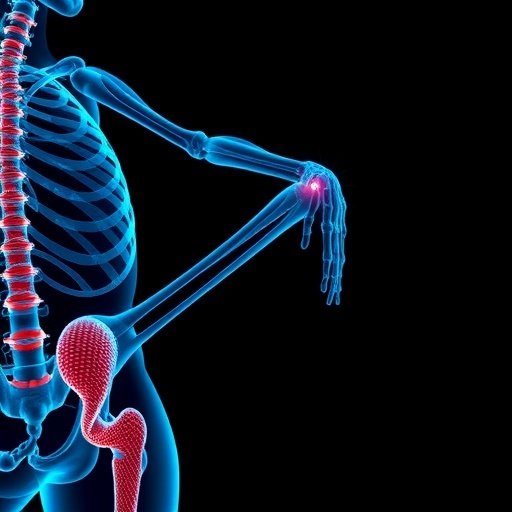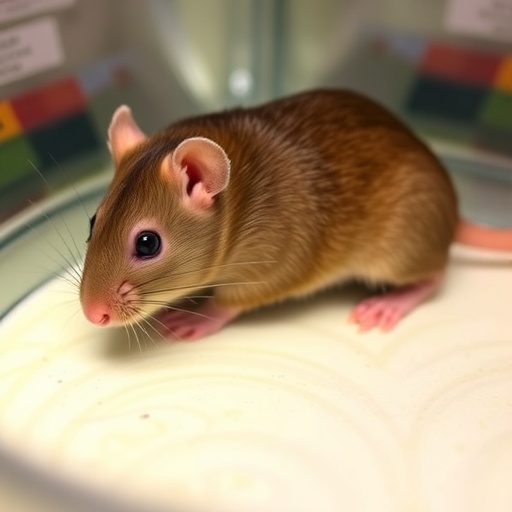PROTECT YOUR DNA WITH QUANTUM TECHNOLOGY
Orgo-Life the new way to the future Advertising by Adpathway
In the rapidly evolving field of Biomedical Engineering (BME), the educational trajectories undertaken by students are crucial for their professional development and self-efficacy. A recent study explored these dynamics, focusing on students’ self-efficacy concerning design throughout their undergraduate BME curriculum. This research not only highlights the essential link between education and confidence in technical design capabilities but also suggests pathways for educational improvement to enhance future engineers’ readiness for real-world challenges.
Self-efficacy, a term popularized by psychologist Albert Bandura, refers to an individual’s belief in their ability to succeed in specific situations. In the context of biomedical engineering, self-efficacy is pivotal. It significantly influences how students face design challenges and engage with complex problem-solving tasks. The detailed study conducted by Higbee et al. examines factors that could enhance students’ confidence in their design abilities, thereby preparing them for the demands of the ever-growing biomedical sector.
The authors of this study approached the topic systematically. They conducted surveys and assessments among BME students across various educational institutions. These instruments measured not only their self-efficacy regarding design capabilities but also the curriculum components that contribute to their learning and confidence. The results offer a striking portrait of how educational practices can directly influence self-perceptions among engineering students.
Building a strong foundation in design thinking is essential for future engineers. The researchers noted that early exposure to design principles within the curriculum correlates positively with increased self-efficacy. When students engage with hands-on design projects and collaborate with peers on real-world problems, they are more likely to develop a robust sense of competence. This finding underscores the critical need for curricula that infuses practical design experiences, ensuring that students are equipped with necessary design knowledge and skills before entering the workforce.
Moreover, the study brings attention to the significant role of mentorship and peer interactions in boosting self-efficacy among students. Faculty members who actively engage with students provide not only knowledge but also encouragement and validation, which are vital in cultivating a growth mindset. Peer collaboration in design tasks has been shown to mimic professional environments where teamwork is essential. By working together, students can bolster each other’s confidence and foster a supportive learning community.
The implications of the research extend to curriculum development across BME programs. Educational institutions are encouraged to integrate more experiential learning opportunities that emphasize design thinking. Practical workshops, competitions, and design challenges could provide students with enriching experiences that directly impact their self-efficacy. The incorporation of interdisciplinary projects is also vital, as they can provide broader perspectives and inspire innovative design solutions.
While the findings are promising, the study also highlights areas that warrant further investigation. There is a need to delve deeper into the intricacies of how varying teaching methodologies affect students’ self-efficacy. It is essential to explore the perspectives of instructors and other educational stakeholders to create a holistic approach towards engineering education. Understanding these layers can enable curriculum designers to address diverse student needs, which may vary significantly based on their backgrounds and experiences.
The intersection of technology and biomedical engineering presents both challenges and opportunities for current students. With innovative technologies continually emerging, students must adapt and be confident in their ability to utilize these tools effectively. The BME curriculum therefore must not only teach existing technologies but also instill a capacity for continuous learning, resilience, and adaptability, which are crucial traits for success in this field.
For engineering students, the journey often involves navigating through complex subjects such as fluid dynamics, thermodynamics, and materials science, among others. Each of these areas can be daunting, yet they are essential for cultivating a comprehensive understanding of biomedical systems. By integrating design challenges related to these subjects, educators can promote a stronger connection between theoretical knowledge and practical application, thereby enhancing students’ confidence in their engineering capabilities.
Additionally, the study points to the importance of self-reflection in the learning process. Students who regularly assess their skills and recognize their growth are better equipped to identify and pursue areas for improvement. Creating structured reflection processes, perhaps through journals or portfolios, can serve as tools for promoting self-efficacy as students track their journey through the BME curriculum.
As the biomedical engineering field continues to expand, understanding the psychological and educational components that contribute to student success is paramount. This study by Higbee et al. not only sheds light on the role of self-efficacy but emphasizes the broader context of engineering education. As BME programs evolve, they will need to remain responsive to these insights, ensuring they cultivate confident, capable engineers who are well-prepared for the future.
In conclusion, the study provides important insights into the ways that educational practices within biomedical engineering can influence student self-efficacy toward design. By emphasizing experiential learning, encouraging mentorship, and fostering environments of collaborative support, BME programs can significantly enhance the confidence and competencies of their students. Ultimately, investing in these areas will not only benefit students but will also propel the biomedical engineering field forward, ensuring that its future practitioners are equipped to meet and exceed the challenges that lie ahead.
Subject of Research: Self-efficacy of Biomedical Engineering Students in Design
Article Title: A Study of Biomedical Engineering Student Self-efficacy toward Design throughout an Undergraduate BME Curriculum
Article References:
Higbee, S., Harrell, D., Chase, A. et al. A Study of Biomedical Engineering Student Self-efficacy toward Design throughout an Undergraduate BME Curriculum.
Biomed Eng Education 5, 15–36 (2025). https://doi.org/10.1007/s43683-024-00163-5
Image Credits: AI Generated
DOI: https://doi.org/10.1007/s43683-024-00163-5
Keywords: self-efficacy, biomedical engineering education, design thinking, experiential learning, mentorship, curriculum development.
Tags: Biomedical engineering educationcurriculum components for engineering studentsdesign self-efficacy in engineeringeducational improvement in BMEenhancing engineering readinesspreparing future biomedical engineersproblem-solving in biomedical engineeringpsychological factors in engineering educationself-efficacy theory in STEMstudent confidence in designsurveys in engineering education researchundergraduate BME curriculum


 2 hours ago
9
2 hours ago
9





















 English (US) ·
English (US) ·  French (CA) ·
French (CA) ·